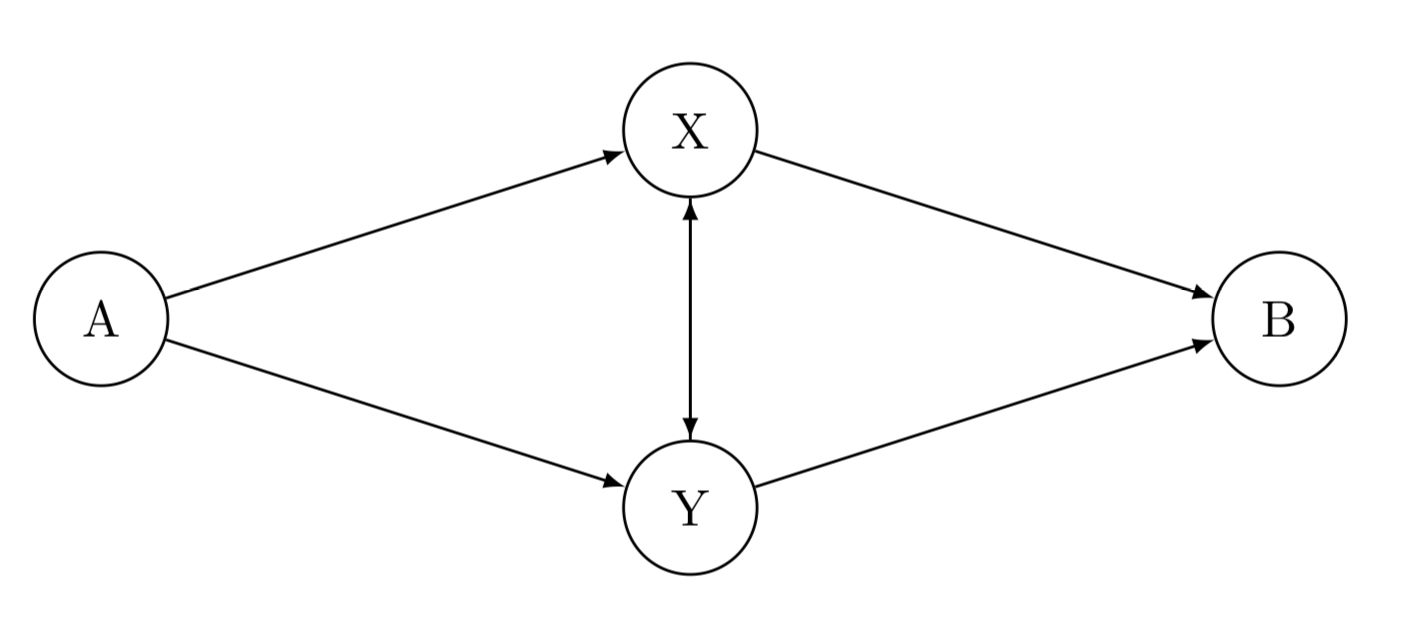I have the following graph:
I am told the following information:
(1) vertex A to vertex X is described by an exponential distribution with lambda = 4;
(2) vertex A to vertex Y is described by an exponential distribution with lambda = 2.5;
(3) vertex X to vertex Y identical to vertex Y to vertex X, and it is described by an exponential distribution with lambda = 10;
(4) vertex X to vertex B is described by an exponential distribution with lambda = 3; and, finally,
(5) vertex Y to vertex B is described by an exponential distribution with lambda = 5.
Let's assume that I'm taking the fastest path between vertices every simulation.
I now want to know the average time it takes to get from vertex A to vertex B.
My R code is as follows:
# Generate/simulate 1000 random numbers for each of the internode paths. AtoX <- rexp(1000, 4) AtoY <- rexp(1000, 2.5) XtoY <- rexp(1000, 10) XtoB <- rexp(1000, 3) YtoB <- rexp(1000, 5) # Length of path from A to X to Y and A to Y to X. AYX = AtoY + XtoY AXY = AtoX + XtoY # Total time of paths from A to B. AXB = AtoX + XtoB AYB = AtoY + YtoB AXYB = AtoX + XtoY + YtoB AYXB = AtoY + XtoY + XtoB # Taking the fastest path of all paths. minAXB = min(AXB) minAYB = min(AYB) minAXYB = min(AXYB) minAYXB = min(AYXB) # Taking an average of the fastest paths. averageTravelTime = mean(minAXB + minAYB + minAXYB + minAYXB) Does this look correct?
